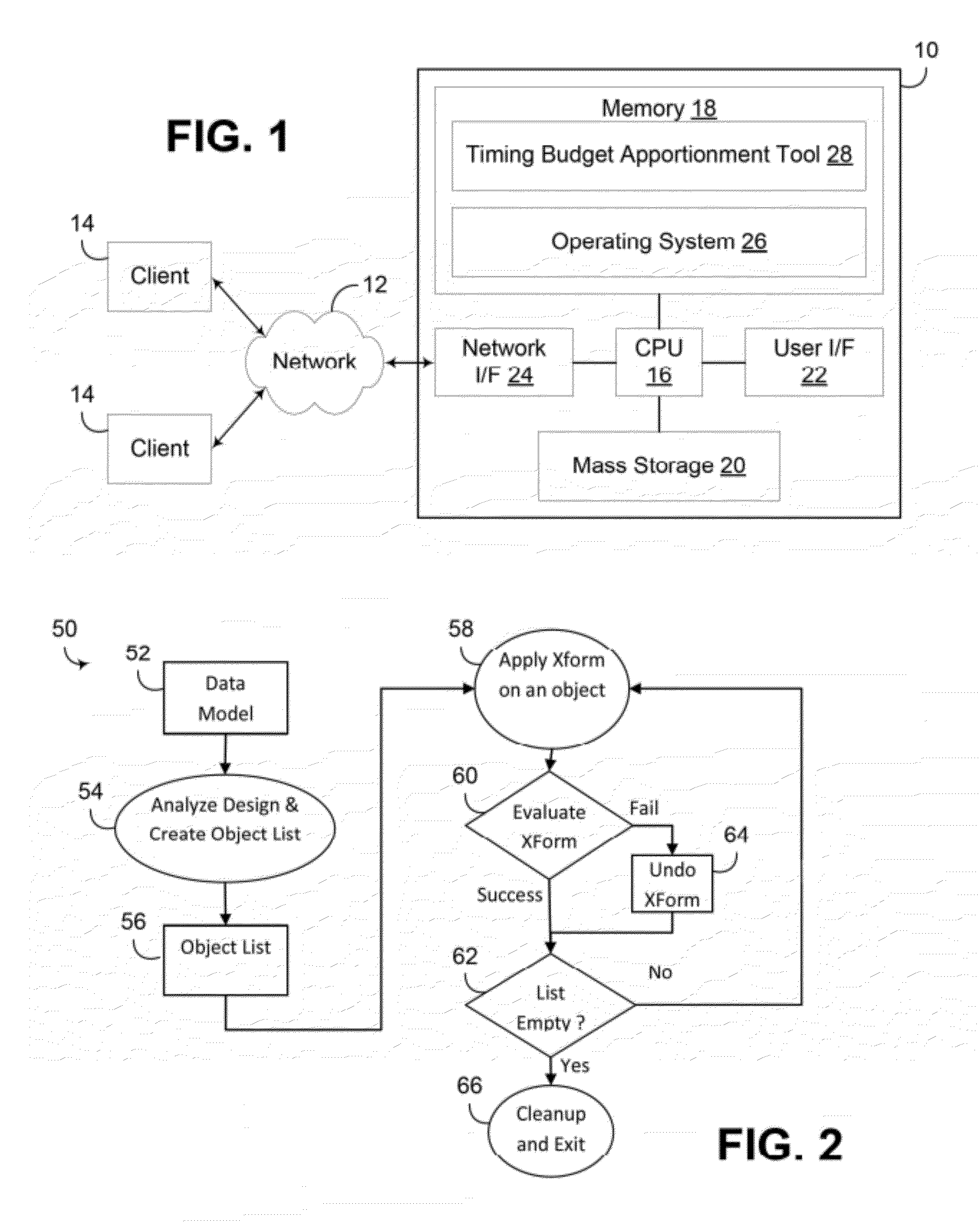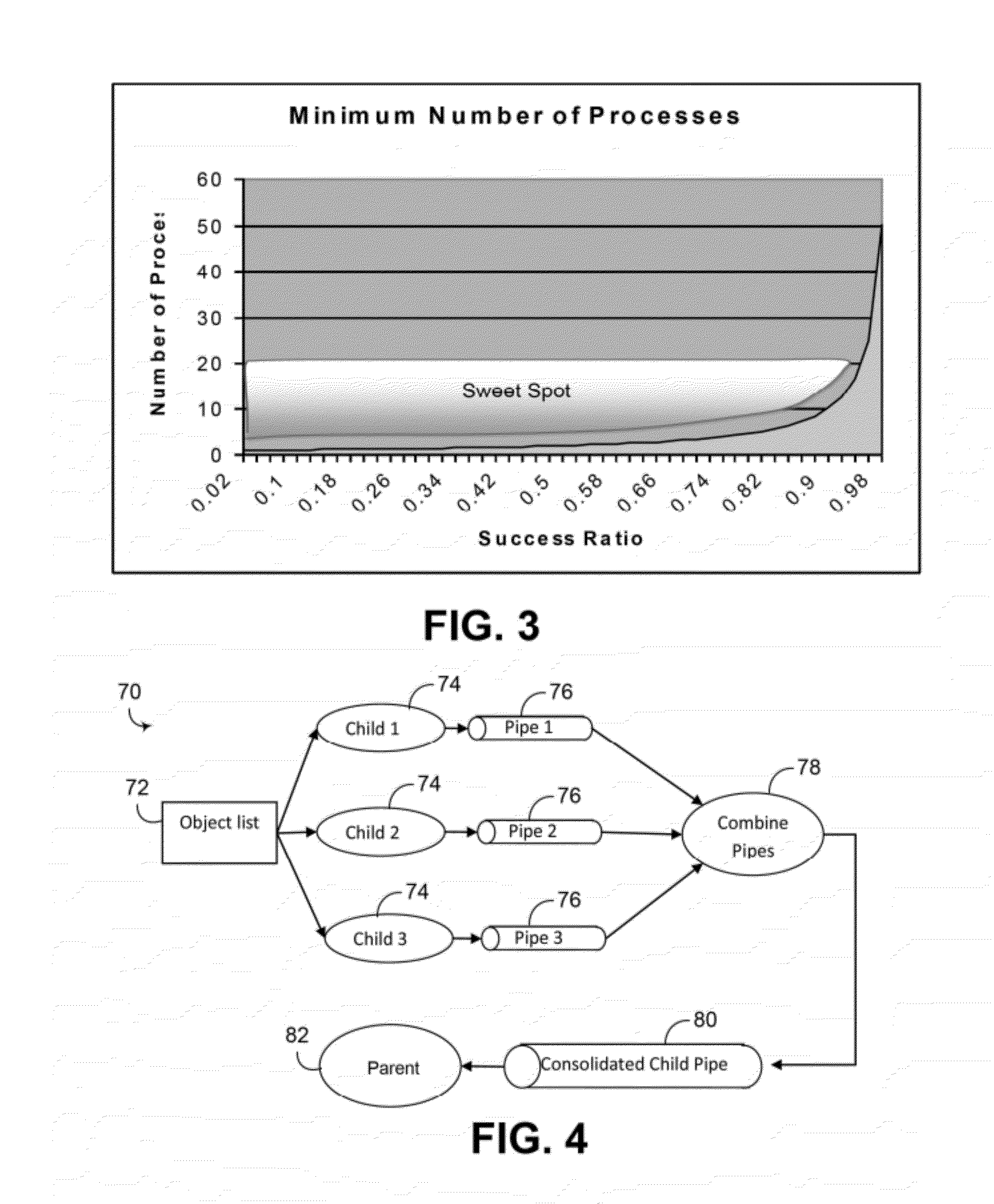Task-based multi-process design synthesis with notification of transform signatures
a multi-process design and notification technology, applied in the field of computer software, can solve the problems of increasing reducing the run time of pds and other logical and/or physical synthesis tools, and increasing the power and complexity of the integrated circuit device, so as to reduce the overhead of the parent process and reduce the workload of the parent process in performing
- Summary
- Abstract
- Description
- Claims
- Application Information
AI Technical Summary
Benefits of technology
Problems solved by technology
Method used
Image
Examples
Embodiment Construction
[0026]A common technique used in optimization is basically trial-and-error. A particular optimization function (called a transform) is given an object such as a pin or net. It examines the circuits in the vicinity of this object and decides if its transformation is possible. If so, it applies the transformation, analyzes the results, and then decides whether to leave the changes in place or back them out through an undo operation to revert the circuit to its original state.
[0027]Depending on the transform, the ratio of the number of successes to the number attempted ranges from fairly high (80% or better) to very low (less than 10%). Embodiments consistent with the invention make use of this characteristic to parallelize the optimization. In particular, objects from an integrated circuit design are grouped into subsets and assigned to child processes, with each child process performing a transform on each of the objects in the subset assigned to that child process and determining wh...
PUM
 Login to View More
Login to View More Abstract
Description
Claims
Application Information
 Login to View More
Login to View More - R&D
- Intellectual Property
- Life Sciences
- Materials
- Tech Scout
- Unparalleled Data Quality
- Higher Quality Content
- 60% Fewer Hallucinations
Browse by: Latest US Patents, China's latest patents, Technical Efficacy Thesaurus, Application Domain, Technology Topic, Popular Technical Reports.
© 2025 PatSnap. All rights reserved.Legal|Privacy policy|Modern Slavery Act Transparency Statement|Sitemap|About US| Contact US: help@patsnap.com



